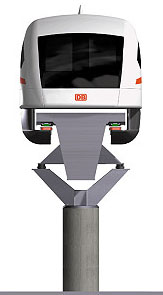Scientists Make Very Small Objects Levitate
Tuesday, August 07, 2007
By Jonathan Richards
The Times
A natural force which causes tiny particles to stick to one another has been reversed by scientists, effectively enabling them to create a type of levitation.
The "Casimir force," which is sometimes referred to as a "sticky quantum" force, makes very small "nanoparticles" attract one another. One example of it is a gecko's ability to stick to any surface with one toe.
A pair of physicists at the University of St. Andrews in Scotland have discovered a way to reverse the force, meaning that they can make small objects repel, rather than attract, one another in a vacuum.
Their findings, which are reported in the August edition of New Journal of Physics, may have applications in "micro-electromechanical systems" — such as those in automobile airbags — where friction can be a problem.
"The Casimir force is the ultimate cause of friction in the nano-world," Professor Ulf Leonhardt, of the university's School of Physics and Astronomy, said. "Tiny mechanical devices which trigger a car airbag to inflate, or which power tiny 'lab on chip' devices used for drugs testing or chemical analysis could run smoother and with less or no friction at all, if one can manipulate the force."
Professor Leonhardt, who published the research with a colleague, Dr. Thomas Philbin, added: "Instead of sticking together, part of the micro-machinery would levitate."
The technique would apply only to micro-objects, and for the time being there is no way to levitate human beings, Professor Leonhardt said. "For now, human levitation remains the subject of cartoons, fairytales and tales of the paranormal."
For us structural engineers - here comes anti-gravity paint to put us all out of business.




![[bigsmile] [bigsmile] [bigsmile]](/data/assets/smilies/bigsmile.gif)
![[smile] [smile] [smile]](/data/assets/smilies/smile.gif) . No longer the realm of science fiction.
. No longer the realm of science fiction.